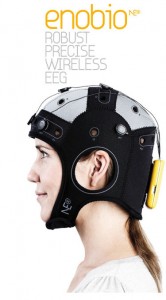[Apologies for audio quality. It won’t happen again.]
Dr. Jim Fugedy runs the Brain Stimulation Clinic, in Atlanta, GA, and has been treating patients using tDCS since 2007. Download the interview here (zipped mp3).
The Brain Stimulation Clinic in Atlanta is the destination for memory and learning enhancement and treatment-resistant patients who suffer from chronic pain, fibromyalgia, migraine headaches, CRPS, depression and tinnitus. Transcranial direct current stimulation (tDCS) therapy is provided in a pleasant, relaxing environment. Instruction, training and supervision for home use is also available for select patients.
Show Notes:
Jim is an anesthesiologist.
The study Jim refers to regarding Felipe Fregni & fibromyalgia:
A randomized, sham-controlled, proof of principle study of transcranial direct current stimulation for the treatment of pain in fibromyalgia (full pdf)
tDCS for treatment of fibromyalgia is not certified – it’s ‘off label’
Device is certified, but not for tDCS = no insurance code, can’t be billed to insurance
20 minute treatment for 5 days.
For fibromyalgia – reduces pain, improves issues – fatigue, compromised mental function
2″ electrodes
(ActivaDose ii Update 3/16 now available as complete tDCS kit through Caputron Medical, use voucher code ‘diytdcs’ for generous discount.)
Most benefit… chronic depression, treatment protocol based on Colleen Loo, Black Dog Institute 6 weeks, follow up maintenance. Up to 8 weeks of treatment + 1-2 treatments follow up maintenance. Daily 20 minute sessions
Can be treated at the clinic for 1-2 weeks. Or home treatment package.
“To treat depression, I place the anode over the left dlpfc (left dorsolateral prefrontal cortex) and the cathode over the contralateral supraorbital area. I have tried positioning the cathode over the contralateral dlpfc and extracephalically (opposite shoulder or upper arm), but the contralateral supraorbital locations provides the most robust effect.” (Correspondence)
Pain montage 2mA, anode M1 & cathode contralateral supra-orbital area

anode at the right primary motor cortex (M1)–cathode on the left supra-orbital From: http://www.sciencedirect.com/science/article/pii/S1053811907000055
For chronic pain, the M1 is the most used area and that’s almost always my first choice. But you can use the cathode over the somatosensory (S1) cortex, to down-regulate the patient’s perception of pain.
And you can also stimulate the Dorsalateral prefrontal cortex which is involved in the emotional component of pain.
Looking at stimulating right dorsalateral prefrontal cortex to attenuate anxiety.
… it may be a location
for the non-pharmaceutical treatment for ADD.
Office visit $150.
Home use treatment package $2400 includes in-office evaluation and training, ActivaDose ii device, electrodes, and unlimited follow-up via visit, phone, skype…
Only side effect Jim has seen is skin burn (but easily avoided with sponge electrodes).
(Patient with skin burns who’d been treated by a doctor using electroencephalogram (EEG) electrodes.)
Tinnitus responds well, though temporarily, to tDCS
Anode, right dorsalateral prefrontal cortex, cortex opposite supra-orbital
Harvard one day course on how to treat with tDCS. Taught 3-4 times a year.
Contrast with approved Electromagnetic treatment for depression (I think he’s referring to TMS transcranial magnetic stimulation here) A 6 week 30 treatment protocol costs between $10-15,000. Affects last about 6 months. And even though it’s certified, it’s not covered by insurance.
…”in the 12 years that it’s been used there have been no side effects reported other than skin (irritations).
“You know we hear stories about Canadians having to wait for surgery. But in the United States, if you don’t have the money and you don’t have insurance, you don’t have to worry about waiting, you won’t get the surgery.”
You can reach Jim at: doctorfugedy [theAtSignHere] transcranialbrainstimulation.com
Thanks Jim!









 This comes to us via the Neuroelectrics.com
This comes to us via the Neuroelectrics.com 








